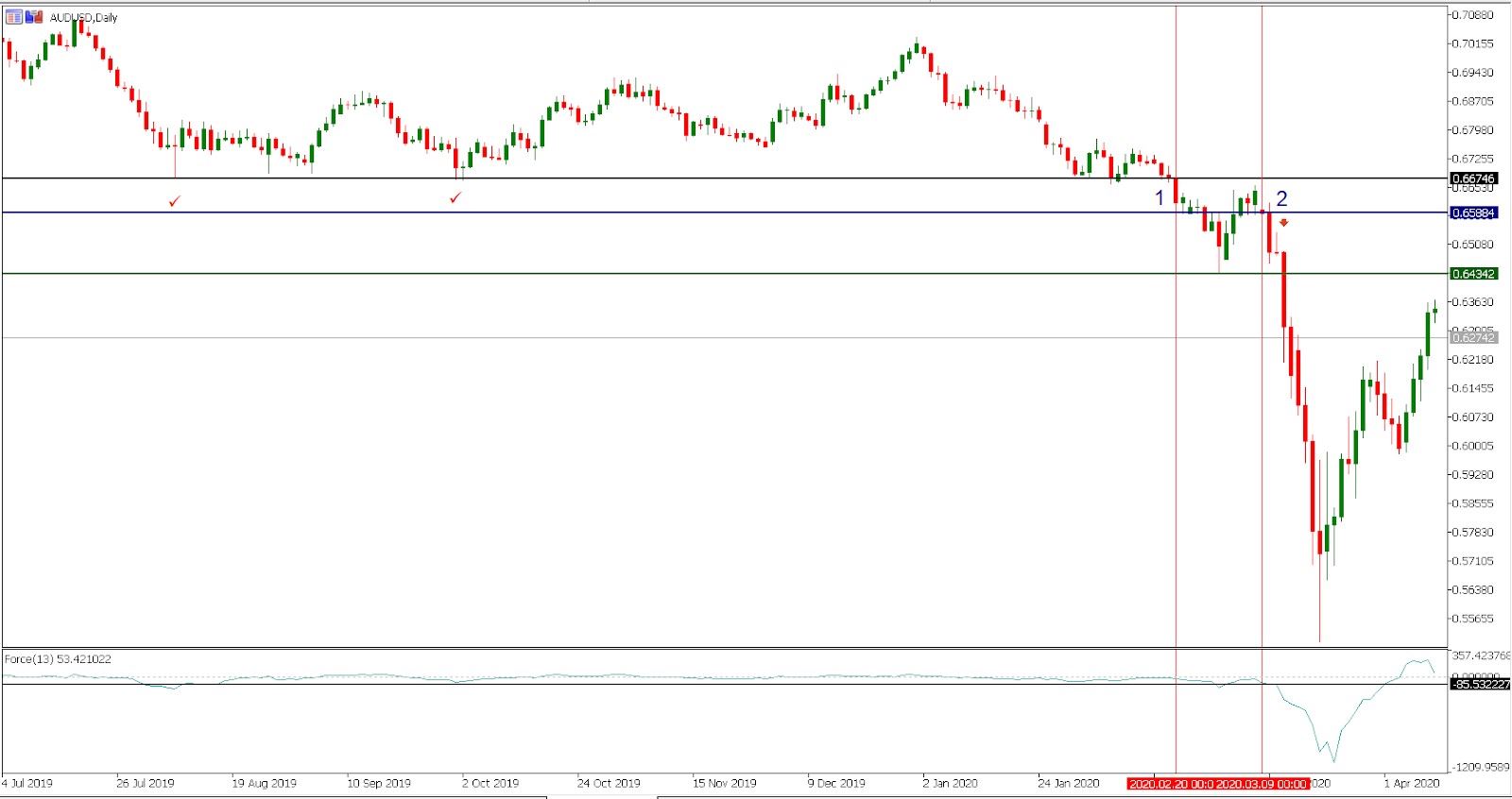Trading the Force Index Indicator
The role of the force index indicator in the trading process is very similar to
other oscillators and lagging indicators. Given its design, the best way to use this technical tool is to see it as a tool for confirmation of the breakouts.
The first step would be to perform a basic
technical analysis and identify important price points from the perspective of supply and demand i.e.
support and resistance. Once we have marked these levels on a chart, the base is set to monitor the price action closely, and wait for a potential breakout to the upside or downside to occur.
Let’s see an example of how to use the force index to confirm sharp movements in the price direction. We have a AUD/USD daily chart below, whose price action we can divide into two parts. The left part of the chart is characterized by the sideways price movement, which generates values around zero.
On the other hand, the right part of the chart is when the pair is moving sharply in both directions. As a result, the force index indicator is following the price movements up and down as well.

The bulls fail in an attempt to push the price action higher above the horizontal resistance, which opens up the space for the sellers to secure a bigger move lower. This time, the second attempt from the sellers to push the price action to the downside is followed by a sharp decline in values of the force index indicator - falling force index - signalling that this time there is a significant force behind this move.
Ultimately, the sellers get a move of around 1,000 pips lower. At the point where the second move lower was initiated, the force index reading was at minus-85.
Entry (the blue line) should be placed at the point where it is obvious that the buyers failed to push above the horizontal resistance i.e. a change in the price direction is imminent. The stop loss is above the horizontal resistance, meanwhile we placed the take profit order where the first move lower was capped (the green line), as we have clear evidence that this level is a support now.
Ultimately, we risked 105 pips to earn 155 pips, putting the risk-reward ratio at around 1:1.5, which is acceptable.